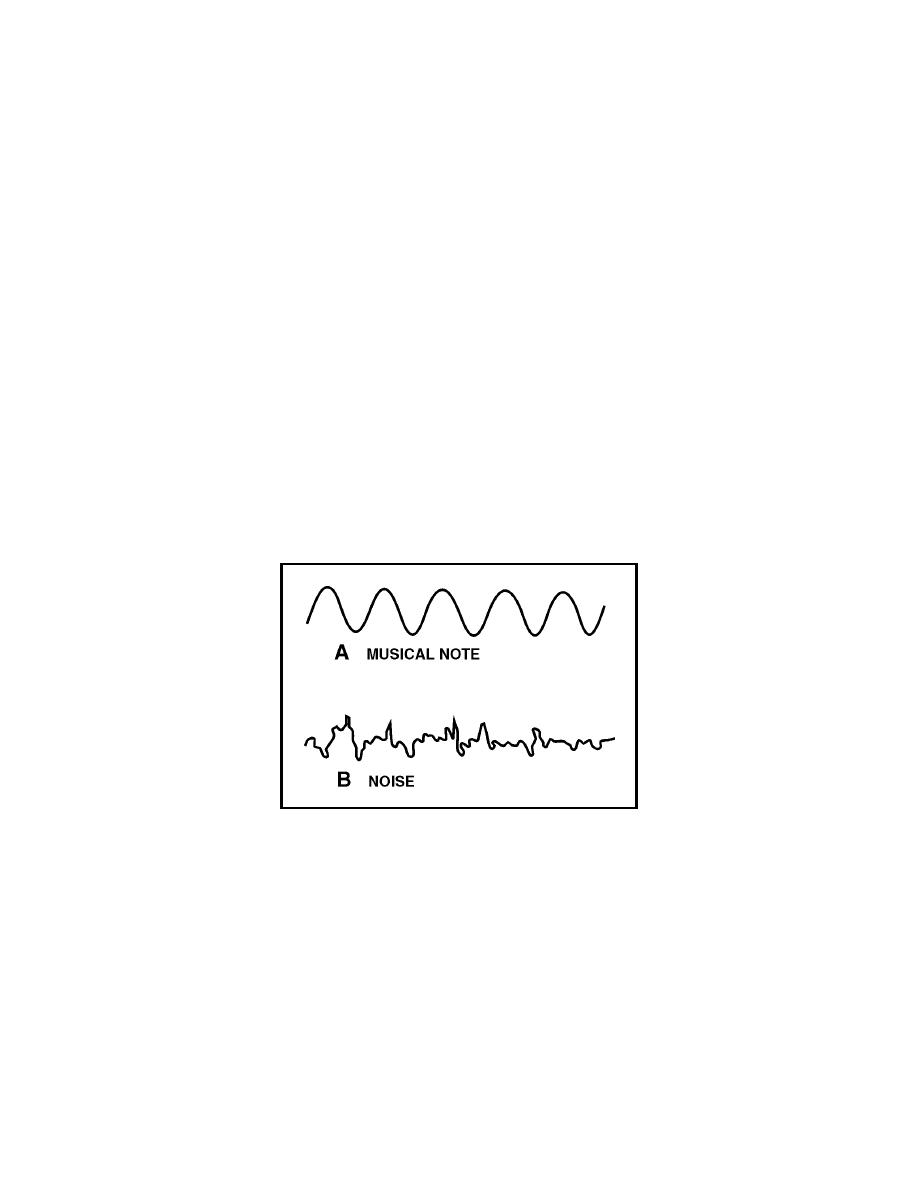
TC 9-64 _________________________________________________________________________
corresponding point on the next wave is a wavelength. The number of cycles
per second (hertz) is the frequency of the sound. The frequency of a sound
wave is also the number of vibrations per second produced by the sound
source.
1-58. Sound waves travel at great distances in a very short time, but as the
distance increases the waves tend to spread out. As the sound waves spread
out, their energy simultaneously spreads through an increasingly larger area.
Thus, the wave energy becomes weaker as the distance from the source is
increased.
1-59. Sounds may be broadly classified into two general groups. One group is
noise, which includes sounds such as the pounding of a hammer or the
slamming of a door. The other group is musical sounds, or tones. The
distinction between noise and tone is based on the regularity of the
vibrations, the degree of damping, and the ability of the ear to recognize
components having a musical sequence. You can best understand the
physical difference between these kinds of sound by comparing the
waveshape of a musical note, depicted in view A of figure 1-13, and the
waveshape of noise, shown in view B. You can see by the comparison of the
two waveshapes that noise makes a very irregular and haphazard curve and
a musical note makes a uniform and regular curve.
Figure 1-13. Musical Sound Versus Noise
1-60. Sound has three basic characteristics: pitch, intensity, and quality.
Each of these three characteristics is associated with one of the properties of
the source or the type of waves that it produces. The pitch depends upon the
frequency of the waves, the intensity depends upon the amplitude of the
waves, and the quality depends upon the form of the waves. With the proper
combination of these characteristics, the tone is pleasant to the ear. With the
wrong combination, the sound quality turns into noise.
Sound Pitch
1-61. The term pitch is used to describe the frequency of a sound. An object
that vibrates many times per second produces a sound with a high pitch, as
with a police whistle. The slow vibrations of the heavier strings of a violin
1-18



 Previous Page
Previous Page
